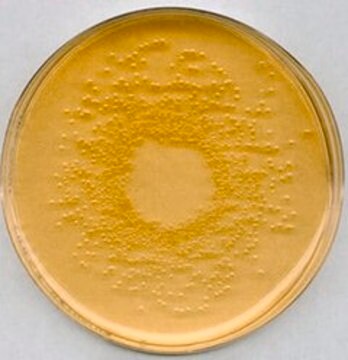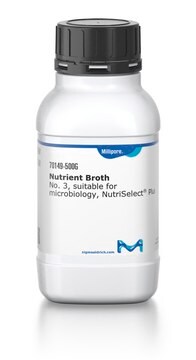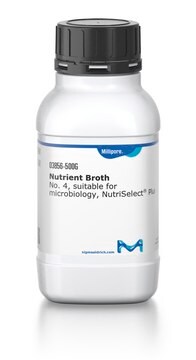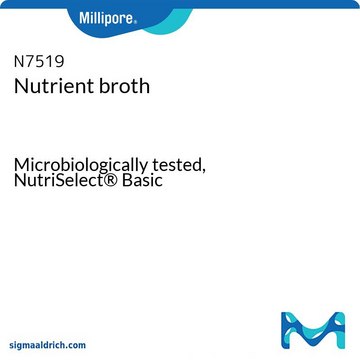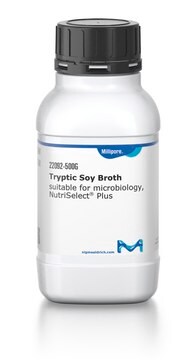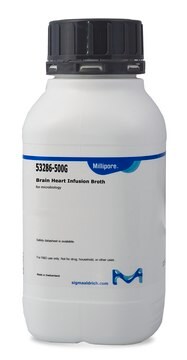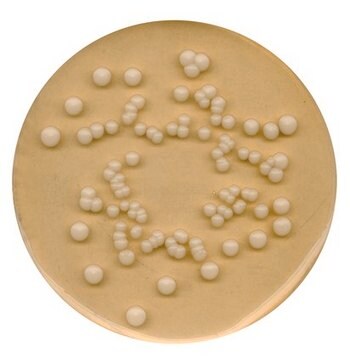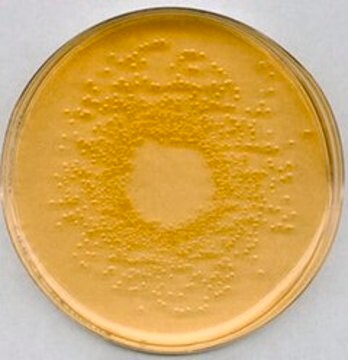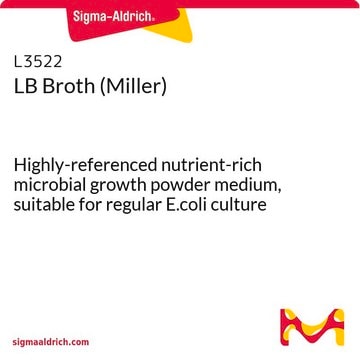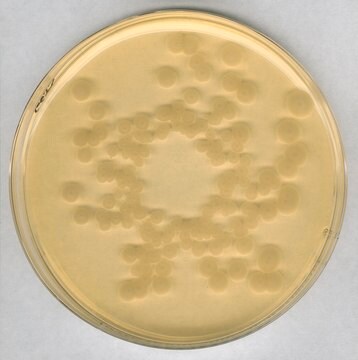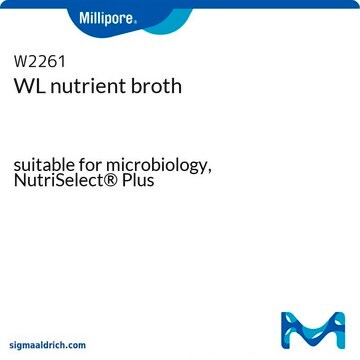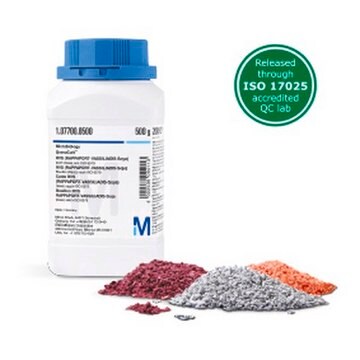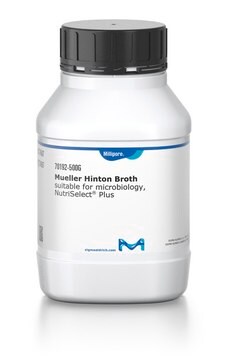Wichtige Dokumente
70122
Nährbouillon
Liquid medium used for the cultivation of a wide variety of microorganism, NutriSelect® Plus, suitable for microbiology
Synonym(e):
NB, Standardnährbouillon, Nährbouillon Nr. 1, Standard - Nährbouillon
About This Item
Empfohlene Produkte
Qualitätsniveau
Sterilität
non-sterile
Form
powder
Haltbarkeit
limited shelf life, expiry date on the label
Zusammensetzung
D(+)-glucose, 1 g/L
peptone, 15 g/L
sodium chloride, 6 g/L
yeast extract, 3 g/L
Hersteller/Markenname
NutriSelect® Plus
Methode(n)
microbiological culture: suitable
pH-Endwert
7.5±0.2 (25 °C)
Anwendung(en)
agriculture
bioburden testing
environmental
food and beverages
life science and biopharma
microbiology
Lagertemp.
2-25°C
Eignung
Erysipelothrix spp.
nonselective for Brucella spp.
nonselective for Escherichia coli
nonselective for Listeria spp.
nonselective for Staphylococcus spp.
nonselective for Streptococcus spp.
nonselective for bacteria (General Media)
nonselective for coliforms
Suchen Sie nach ähnlichen Produkten? Aufrufen Leitfaden zum Produktvergleich
Verwandte Kategorien
Allgemeine Beschreibung
Nährbouillon ist ein Allzweckflüssigmedium, das Hefeextrakt, Pepton, Natriumchlorid und andere Nährstoffbedürfnisse für das Wachstum einer breiten Vielfalt von Mikroben enthält, die keine speziellen Nährstoffe erfordern. Sie wird für die routinemäßige Kultivierung von Mikroorganismen aus sowohl klinischen als auch nicht klinischen Proben verwendet. Durch die Zugabe von verschiedenen biologischen Flüssigkeiten wie Blut, Serum, Eidotter usw. kann sie für die Kultivierung von anspruchsvolleren Mikroben geeignet sein.
Anwendung
•Nährbouillon Nr. 1 wird für die routinemäßige Kultivierung von Mikroorganismen, die keine bestimmten Nährstoffe erfordern, eingesetzt.
•Sie wird auch zum Zählen und zur Anreicherung von Bakterien verwendet.
•Nährbouillon Nr. 1 kann als Basis für die Herstellung von speziellen Kulturmedien verwendet werden.
Angaben zur Herstellung
Fußnote
Die Bezeichnung Basic, Plus oder Prime wird angehängt als Hinweis auf die Qualitätskontrollstufe — von einer grundlegenden Qualitätskontrolle über die gängige QC-Plus bis hin zu Prime für eine vollständige Einhaltung behördlicher Auflagen.
Rechtliche Hinweise
Lagerklassenschlüssel
11 - Combustible Solids
WGK
WGK 3
Flammpunkt (°F)
Not applicable
Flammpunkt (°C)
Not applicable
Hier finden Sie alle aktuellen Versionen:
Besitzen Sie dieses Produkt bereits?
In der Dokumentenbibliothek finden Sie die Dokumentation zu den Produkten, die Sie kürzlich erworben haben.
Kunden haben sich ebenfalls angesehen
Artikel
Streptococci- Overview of Detection, Identification, Differentiation and Cultivation Techniques
Unser Team von Wissenschaftlern verfügt über Erfahrung in allen Forschungsbereichen einschließlich Life Science, Materialwissenschaften, chemischer Synthese, Chromatographie, Analytik und vielen mehr..
Setzen Sie sich mit dem technischen Dienst in Verbindung.